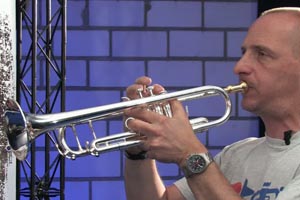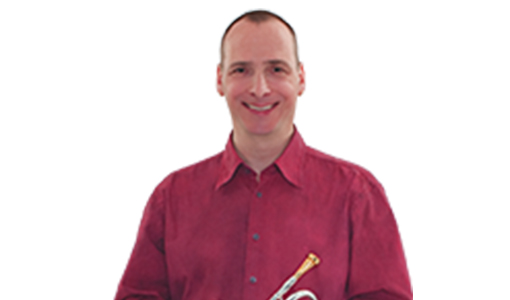How important is warming up really?
Warming up is a matter of much speculation, horror stories and mystery. At the end of the day, each brass player will have to find their own warm-up routine. To ensure that everything works as planned and to avoid falling prey to ghastly stories, you need to be aware of a number of facts. Anybody who has studied this subject will tell you that a lot of advice is questionable at best.
Just think of remarks like "...after all, athletes also need to warm up." Nobody has ever managed, though, to explain how sport and playing the trumpet are related. Another staple is "muscles need to be warmed up!" I can see why this is important for athletes: thigh muscles are quite big and it therefore takes a while before a blood supply is underway"”but for trumpet players? Which muscles do actually require warming up? Which muscles do we need in the first place?
The lip muscles for sure, perhaps the respiratory muscles... what else? The respiratory muscles are being used all the time, albeit les heavily than while playing a brass instrument, but nobody can deny that they are working all the time. Yet, even though active exhaling of the kind we use for playing a brass instrument is hardly ever used for regular breathing, there isn’t much time to warm up in this department. As for the lip muscles, they look a lot smaller to me than my thigh muscles. Getting them up to speed requires a little bit of "horse flapping", which massages the lips and causes them to fill with blood. The tongue is also used for playing a brass instrument"”but what else is there to warm up? Right, the fingers are used for piston or valve instruments! Do they require some form of warm-up?
To me, "warm-ups for musicians" are different from what athletes need to perform. As stated earlier, there aren’t many muscles involved and what little there is could do without physical warm-up exercises. Warming up for a performance or rehearsal has a different meaning.

Breathing, lips and tongue
Breathing out when performed to stay alive is not a conscious act: relaxing certain muscles causes the lungs to empty. In "real life", our lips are far less solicited than while playing a brass instrument. And, yes, the tongue does something else than when I’m blowing my horn.
If our lips, breathing mechanism and tongue do something else when we play a brass instrument, we need to "upload" the "brass job description" to our brain before playing the first note. In short, my motor memory needs to recall the muscle sequences for these three functions.
I suppose most brass players would agree that warming up involves trying to get a feel for the tone. I don’t believe anybody can pinpoint the amount of time a player needs to recall the "brass job description" or "a feel for the tone," for this probably varies from one player to the next and depends on several factors. Another aspect for the warm-up stage is how you are feeling: "I feel great... it seems to go well today... I’m in good shape".
The very first note is crucial for the entire rehearsal or performance. Obviously, there is a lot that could be said in this respect, but that lies beyond the scope of this article. I would just like to list a few possibilities for your warm-ups.
Buzzing and horse flapping
Some exercises can be performed without the instrument. And I leave it up to you whether or not to perform them at all.
-The so-called "horse flapping" is one way to help your lip muscles reach their "operating temperature".
-The "buzzing" exercise is a good preparation for the movements the lips need to perform while playing a brass instrument.
-Consciously breathing in and out doesn’t require an instrument either.
Exercises with the instrument
My preferred warm-up exercises on the instrument.
"Breath attack" is an exercise I devised to ensure that breathing out coincides with setting my lips in motion, while it also trains my tongue.
Watch the video for this exercise
Pitch and glissando exercises allow you to get your breath, lips and tongue to work in sync.
Watch the video for this exercise
Warming up in the medium range
I believe that starting your warm-up session in the medium range makes a lot of sense, because your body adapts to the range in which you play: the higher the notes, the more your body is solicited. Similarly, starting out in the low range may cause your body to become a little lazy, making it difficult to play high notes afterwards.
See the jupiter.info website for video examples of these exercises. There are three videos that illustrate the various exercises.
For now, have fun with your trumpet.
Yours,


